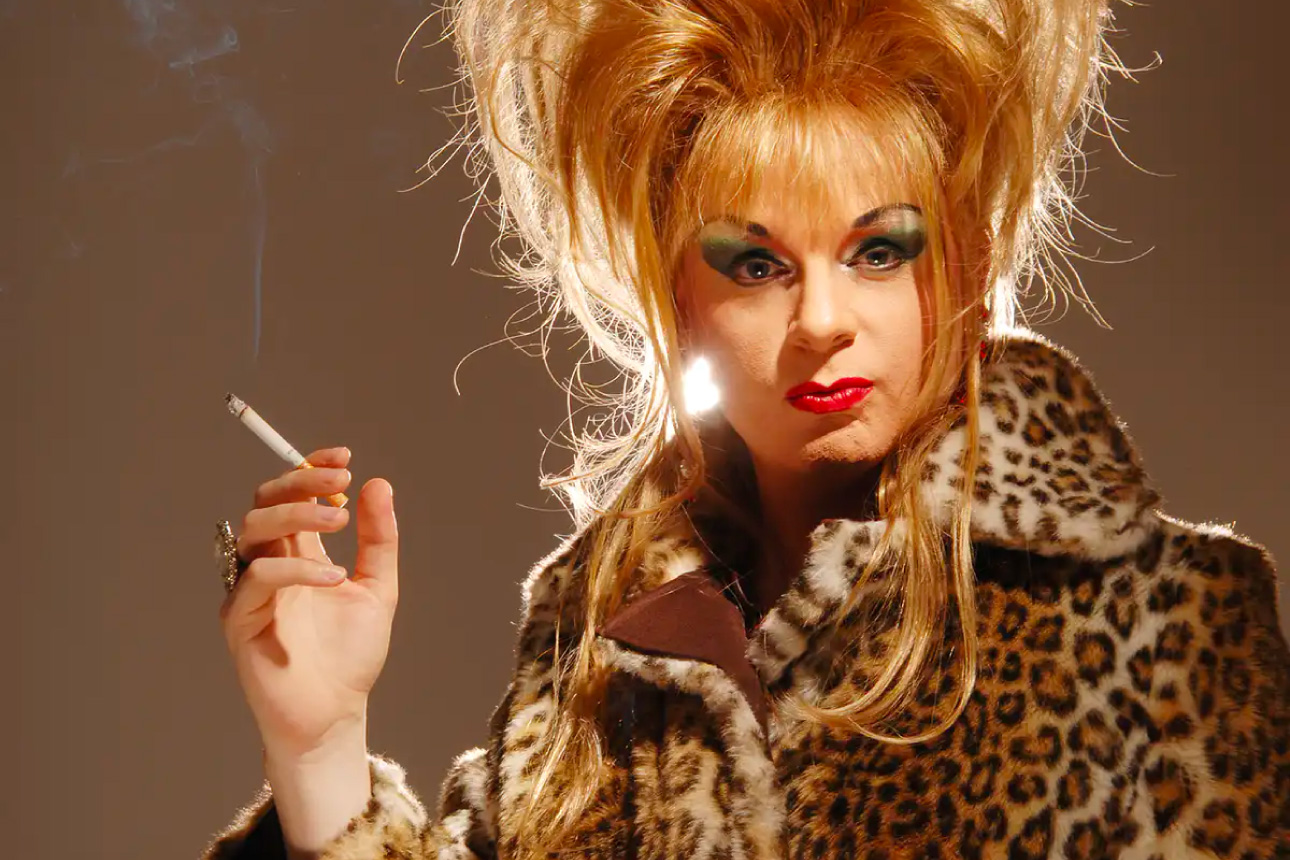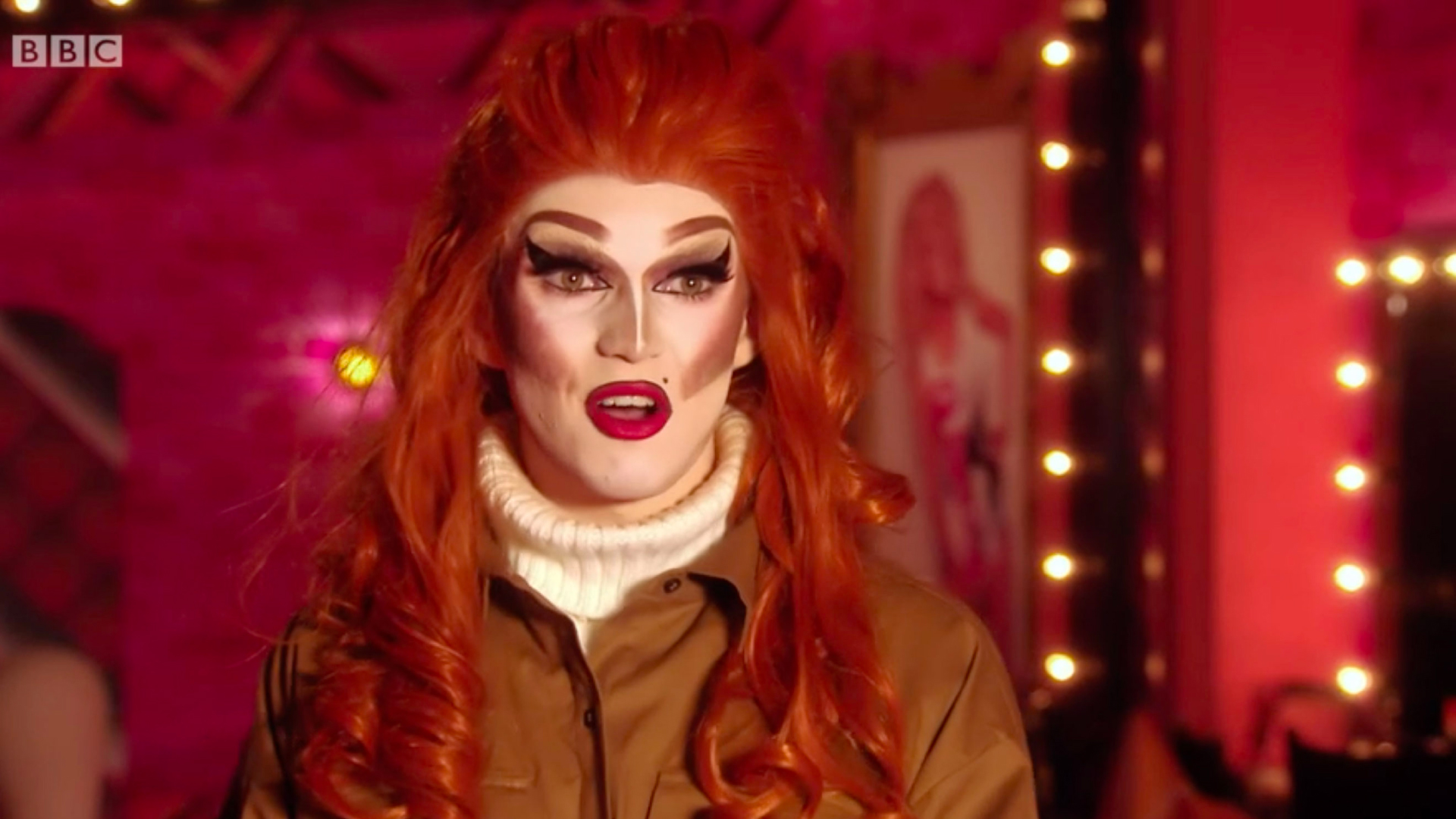The International Evolution of Mainstream Drag Culture
Drag performance is enjoying a sparkling moment under the international spotlight and its new found popularity is leading to new hybrid forms. Drag has peaked because of TV series RuPaul’s Drag Race, which boasts 11 seasons in the US, two in Thailand and has recently crossed the Atlantic with a UK version.
The journey from the US to the UK has exposed some of the geographical and regional differences between the forms. And it has also highlighted some polarized thinking in drag culture that needs further disruption.

Gale Force, the drag persona of author Mark Edward who merges ‘old school’ with guerrilla drag practices. Photo by Stuart Rayner, Author provided
Since the rise of Drag Race, there has emerged two positions of drag, often referred to as “old school” and “new school”. Old school drag points to drag and artistry in traditional venues such as bars and clubs. It emphasizes the traditions of drag as a performance form.
On the other hand, new school drag highlights the turn to social media as “the arena” in which performance is tried and tested. New school emphasizes makeup tutorials and homemade videos.
The dichotomy of drag is often (though not always) mapped across generational differences, between those who grew up without the internet and those who are digital natives. In episode two of Drag Race UK, Scaredy Kat (one of the new school queens) performs live for the first time. Scaredy Kat’s lack of live performance experience is demonstrated in a lip-synch challenge and, when losing their place on the program and sashaying away, Kat comments: “Not bad for a first gig.”

Scaredy Kat sashays away on Drag Race UK. Photo courtesy of BBC
Research into drag cultures and drag performances found that despite this common idea of two schools, drag is much more diverse, particularly when looked at from outside the frame of international television.
Drag is, and should remain, hybrid. Rather than being formulaic, drag continues to self-create and self-fashion, combining and scavenging elements from performance, life, digital culture, and comedy.
Mainstreaming and merchandising
Drag now occupies a newly visible position in the mainstream. It has grown in popularity, with American drag phrases such as “shade” and “read” becoming popular, as are dance and body movements culled from the US ball scene (most famously recorded in Jennie Livingstone’s film Paris is Burning) often with little reference to its gender and race politics.
But to become part of the culture, indigenous forms of drag must play a part. These forms are rooted and belong to their local contexts, settings, histories, and queer communities. The current mainstreaming of drag often uproots these connections in the pursuit of money.
The growth in drag merchandise, popular books, clothing, stationery and accessories all serve to generate revenue and profile. For some performers, this is a vital source of income – with more drag performance comes more competition. Much of the merchandising is necessary for helping performers make ends meet. But for publishers, managers and manufacturers, drag is a moneymaker, and these profits do not always filter back to queer and trans communities.
It may be that the mainstreaming of drag is inevitable given the access to the codes and secrets of drag made possible through social media and video sharing sites. But we do not consider those, often younger, artists apparently in the new school as zombies passively accepting whatever is thrown at them through a computer screen. Rather, performers transform what they see, resulting in local performances that still have a flavor of their own histories. There are also new forms of performers emerging who combine elements. There are performers resisting the easy polarization of old/new school.
In the UK, a performer like London-based Meth is just this kind of new hybrid. Meth embraces new school elements in her look and performance (lip-synching is particularly noticeable). But at the same time, she maintains some of the local traditions in the form of her one liners and MC style.
In particular, her act is strikingly similar to another London queen, Regina Fong, who died in 2003 and whose work in Camden, London is legendary. Although Meth did not see Regina perform live, they share an approach to the performance by making much of intercut recorded audio from popular TV and films.
Of course, with the exponential growth of drag performance, there is a lot more to see – and a lot more to miss. There is so much diversity in drag forms but it is easy to end up talking about the ones we are used to seeing in our respective locations.
The challenge is to enjoy the range that drag has to offer and to engage not only with the local forms, but also with those that are international, non-Western and not mainly occupied by cisgender white gay men. Inevitably, this is a similar challenge felt by any forming field, one that must be met if we are to deal with it in a critical and historically informed way.
This article is republished from The Conversation under a Creative Commons license.

You must be logged in to post a comment.